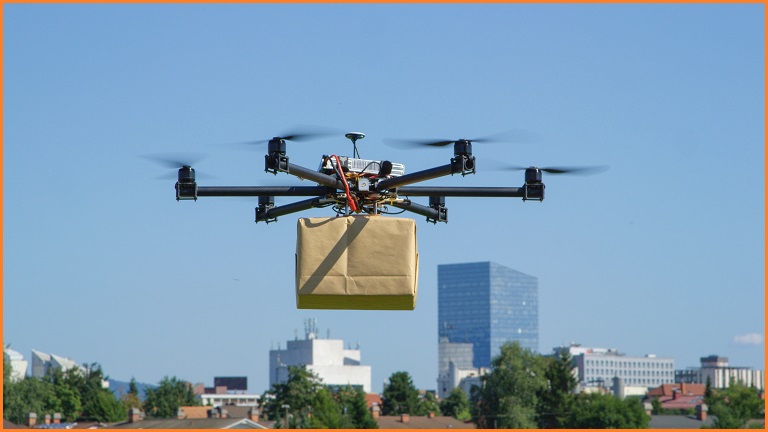Amazon’s drone delivery dream is struggling to get off the ground with insiders and former employees saying the project is on the brink of collapse, according to a report in Wired.
In 2019, Amazon released a promotional video of its experimental quadcopter and said its product, then called Amazon Prime Air, could deliver packages up to 24km away “in less than 30 minutes” and would start operating “within months”.
Two years later that promise remains unfulfilled and it seems like the ambitious project from the retail giant – which is being replicated by competitors including Alphabet-owned Wing and the United Parcel Service (UPS) – is looking shaky.
Amazon moved significant research and development of its drone delivery system to the UK in 2016 because of a more favourable regulatory environment for test flights – it only just got testing approval in the US last year.
Now former employees have come out saying the UK operation was a shambles with over 100 staffers losing their jobs in recent years as Amazon began closing down divisions working on the machine project to help autonomous drones map and understand their environment.
One ex-staffer quoted by Wired said a team in the project looking at human and animal data analysis was “very dysfunctional”, describing how the company closed the team off, shuffled staff around, then re-created the team again a few months later.
“There was a lot of decision-making made in the moment without long term thought to it,” they said.
“It was almost slinging shit at the wall and hoping stuff would stick.”
Other staffers said there was a constant stream of managers coming and going, with one saying it often looked like “rats [jumping] off a [sinking] ship”.
“There was a point when they did bring in four or five new managers all at once,” an ex-Amazon employee said.
“And a lot of managers were leaving quite quickly, often within a year of joining Prime Air.”
The Wired article paints a bleak behind-the-scenes picture of what Amazon said would become the future of its delivery service.
Management restructured and cut jobs, and told data analysts – who were trying to build systems that could make the drones safely fly around urban environments – that there was little chance of permanent employment beyond their contracts.
One former employee said they watched a colleague drinking beer at their desk in the middle of the day. Another said they had seen an employee just hold down a button to approve every frame of drone footage regardless of if there were things that needed to be flagged.
“Everything started collapsing inwards because they piled too much on, they put people in charge who didn’t know anything about the project and they oversold. It’s all one gigantic oversell – just so many promises that can’t be kept,” an ex-staffer said.
Amazon appears to still be working on its futuristic drone delivery technology and is looking to start running test flights in the US.
But when asked about the state of the Prime Air project and if there were plans to ever bring it to Australia, an Amazon Australia spokesperson told Information Age “we don’t comment on future plans”.
People who worked on the project are pessimistic about Amazon Air’s future, with one former employee quoted saying “when I was there, Prime Air was already years from being a thing, but it’s never going to get off the ground”.










